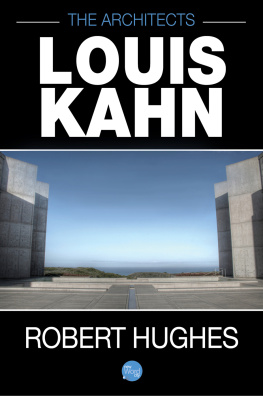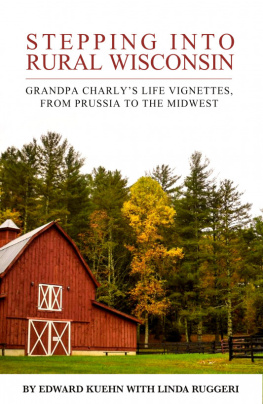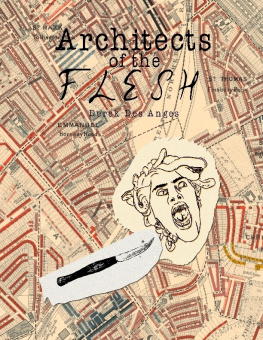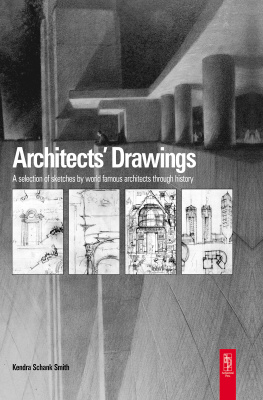Kuehn - Architects Gravesites
Here you can read online Kuehn - Architects Gravesites full text of the book (entire story) in english for free. Download pdf and epub, get meaning, cover and reviews about this ebook. year: 2017, publisher: MIT Press, genre: Detective and thriller. Description of the work, (preface) as well as reviews are available. Best literature library LitArk.com created for fans of good reading and offers a wide selection of genres:
Romance novel
Science fiction
Adventure
Detective
Science
History
Home and family
Prose
Art
Politics
Computer
Non-fiction
Religion
Business
Children
Humor
Choose a favorite category and find really read worthwhile books. Enjoy immersion in the world of imagination, feel the emotions of the characters or learn something new for yourself, make an fascinating discovery.
- Book:Architects Gravesites
- Author:
- Publisher:MIT Press
- Genre:
- Year:2017
- Rating:4 / 5
- Favourites:Add to favourites
- Your mark:
- 80
- 1
- 2
- 3
- 4
- 5
Architects Gravesites: summary, description and annotation
We offer to read an annotation, description, summary or preface (depends on what the author of the book "Architects Gravesites" wrote himself). If you haven't found the necessary information about the book — write in the comments, we will try to find it.
Architects Gravesites — read online for free the complete book (whole text) full work
Below is the text of the book, divided by pages. System saving the place of the last page read, allows you to conveniently read the book "Architects Gravesites" online for free, without having to search again every time where you left off. Put a bookmark, and you can go to the page where you finished reading at any time.
Font size:
Interval:
Bookmark:

Architects Gravesites
Architects
Gravesites
A Serendipitous Guide
Henry H. Kuehn
Foreword by Barry Bergdoll and Afterword by Paul Goldberger
2017 Massachusetts Institute of Technology
All rights reserved. No part of this book may be reproduced in any form by any electronic or mechanical means (including photocopying, recording, or information storage and retrieval) without permission in writing from the publisher.
Printed and bound in the United States of America.
Library of Congress Cataloging-in-Publication Data
Names: Kuehn, Henry H., author.
Title: Architects gravesites : a serendipitous guide / Henry H. Kuehn.
Description: Cambridge, MA : The MIT Press, 2017.
Identifiers: LCCN 2016037855 | ISBN 9780262533478 (pbk. : alk. paper)
Subjects: LCSH: ArchitectsUnited StatesBiography. |
ArchitectsTombsUnited StatesGuidebooks. | Sepulchral
monumentsUnited StatesGuidebooks.
Classification: LCC NA736 .K84 2017 | DDC 720.92/2 [B]dc23 LC record available at https://lccn.loc.gov/2016037855
EPUB Version 1.0
To two good friends who wish to remain anonymous. Without their initiation of the project, their research, and their unflagging support, this book would not exist.
Foreword
Lector, si monumentum requiris circumspice (Reader, if you seek his monument look around you) is the sole marker of Sir Christopher Wrens (died 1723) tomb in Londons St. Pauls Cathedral. Unadorned by either a portrait or memorial of any kind, this inscription, set below the dome of the most monumental of Wrens many church designs, raises the question of the best way in which architectswho devoted their lives, for the most part, to conceiving monuments that might out-last them, and it is hoped many generations to comemight themselves enter into both eternity and memory. A similar sentiment is evoked in a granite plaque set in the herringbone brick paving on the plaza at the center of the Columbia University campus, one of the great designs of Charles Follen McKim, admired by many, few of whom pay attention to the inscription below their feet as they take in one of the grandest public spaces in New York, although McKim was laid to rest far from any of his great civic designs, which transformed the face of New York in the years on either side of 1900. As we learn in this marvelous bio-gazetteer of American architectural death assembled as an act of homage and curiosity by Henry Kuehn, McKim also enjoys a lasting memorial mention where he is buried, surrounded by his family in a cemetery in Orange, New Jersey. Public figure or private individual, civic artist or simple citizen, the architects public and private personae come definitively to the fore in the place, shape, and form of the final resting place.
Final wishes are, of course, always subject to the decisions made by those who survivefamily, fellow artistsas to how to mark the final resting place of architects. How many designers leave behind instructions, or even a design destined to be posthumous in its execution, for the act or object that will mark their final resting place, or record the scattering of their ashes over a treasured or significant landscape? At least as early as the Renaissance the notion that great architects deserved honors in the public realm, sometimes on or in the very monuments they created, emerged, a practice that grew exponentially with the rise of the cult of the civic hero in the Age of the Enlightenment, and in the wake of the American and French Revolutions. Ironically enough, for instance, when the great French eighteenth-century architect Jacques-Germain Soufflot was given a grave in the crypt of the French Pantheon, one of the great catalysts of the rituals of the memorialization of secular heroes as public exemplar, it was on the basis of a promise made by his original clients, the monks of the Abbey of Ste. Genevieve to allow him alone burial among them in the great church of Ste. Genevieve, still under construction when Soufflot died in 1780. Soufflots great monumental church dedicated to the patron saint of Paris, had been converted in 1791 under the French Revolution into a temple to honor grands hommes (great men). Renamed the Pantheon, the building would host the remains of Voltaire, Rousseau, and countless other philosophers, men of state, scientists, over the decades, but would in fact never house an architect other than its original author, who could never expect that he would have created, or come to eternal rest in, one of the grandest civic monuments of nineteenth century France.
With the rise of public cemeteries, divorced from churchyards, in early nineteenth-century Europe and North America, the conflation of public commemoration and private memorial became common, particularly for figuresarchitects among themwho had obtained a great public persona during their lifetime. The great cemeteries of London, Paris, and later Munich, Berlin, Rome, Genoa, St. Petersburg, and other cities with picturesque cemeteries are filled with monuments to architects, often designed by another architect designated by the deceaseds colleagues to embody the essence of his or her contribution to architecture. Here the paradoxical charge arises to design something in the style of the deceased, if no instructions have been left behind, a type recorded here in the tomb Tallmadge designed for Louis Sullivan. So for instance Flix Duban designed, in the St. Charles cemetery in Marseille, a tomb for Michel-Robert Penchaud (17721833), author of some of the most severe neoclassical monuments of Marseille, in a chaste neoclassical form, inscribed with the ground plans and elevations of some of Penchauds civic monuments, even though Dubans entire career was based on a rebellion from neoclassical orthodoxy. Few are the architects, like Percier and Fontaine in Paris, Schinkel in Berlin, or Ralph Rapson, whose tomb is included here, who have the foresight to design their own tomb, and the good fortune for their admirers to see it executed as designed. Even rarer is the architect who is interred and memorialized, not in a churchyard or cemetery, but in one of the finest buildings he or she might have designed; Bertram Goodhue and William Strickland are the examples found in Kuehns treasure hunt. Here the gamble for eternity is doubled, for the architects who almost always build with the hope that buildings will outlast them, here have their own concrete memory on earth tied to the future fate of their architectural creations, entrusted not to the promise of perpetual maintenance often honored only in the breach in cemeteries but rather to the modern legislation of historic preservation to keep a building safe from future alteration or real estate pressures.
Although architects enjoy the honors of the Hall of Fame of Great Americans at the former New York University campus in the Bronx, there is no single pantheon for the burial of Americas great designers of buildings. But as Henry Kuehn has shown us, Graceland Cemetery in Chicago is as close as one can get to a Valhalla for the great figures of Chicago, a city like no other associated with its contributions to American architectural history. And here it is clear that the professional ethos of Chicagos architects, has made Graceland into one of the richest landscapes of architectural honors anywhere in the country. This book is a delightful journey into the last bids for memory granted to designers whose work has transformed the face of American cities.
Barry Bergdoll
Professor of Art History and Archeology
Columbia University
New York, New York
Former Philip Johnson Curator of Architecture & Design
Museum of Modern Art
Font size:
Interval:
Bookmark:
Similar books «Architects Gravesites»
Look at similar books to Architects Gravesites. We have selected literature similar in name and meaning in the hope of providing readers with more options to find new, interesting, not yet read works.
Discussion, reviews of the book Architects Gravesites and just readers' own opinions. Leave your comments, write what you think about the work, its meaning or the main characters. Specify what exactly you liked and what you didn't like, and why you think so.









